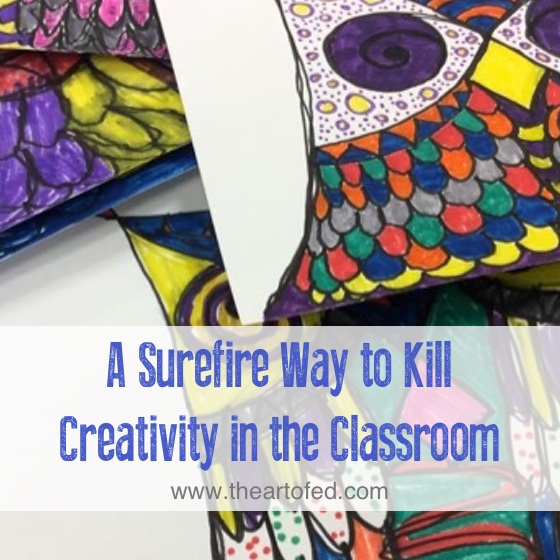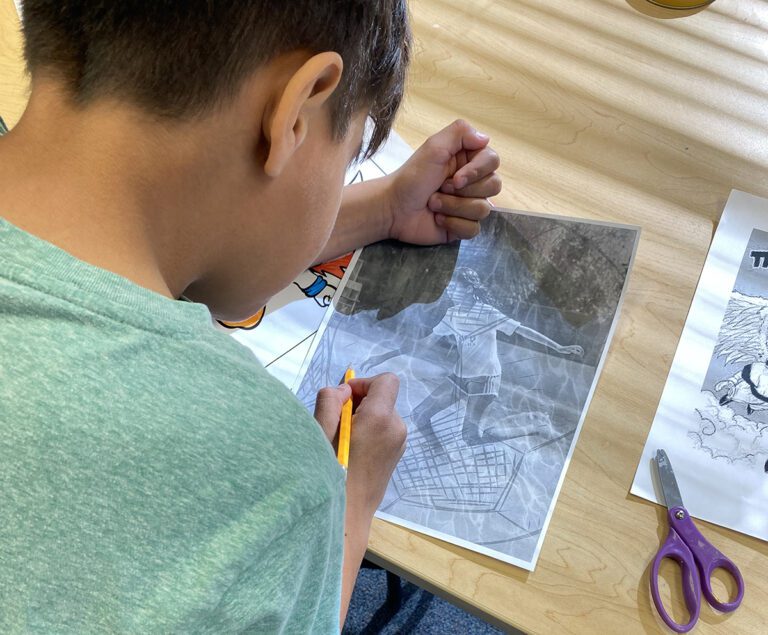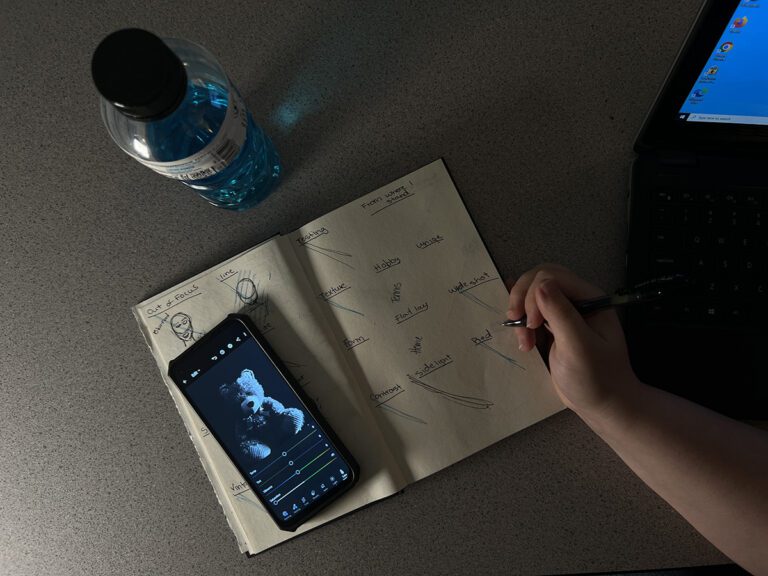
The word “no” sets boundaries. Often boundaries are good and healthy for us to establish in our lives. When we set boundaries by establishing rules and consequences for our students, it often leads to positive results. Sometimes “no” is the appropriate word to choose. But there is one spot where the word “no” kills what art teachers strive to cultivate in their students: creativity.
Have you ever had a student want to go a different direction on their artwork than what you had planned? Perhaps the thought of saying yes made you a bit nervous. Or maybe there just wasn’t enough time to accomplish the request. You may have replied, “No” or, “Not today” or, “That’s not exactly the direction we were heading.” The hard truth is that phrases like those actually kill our students’ creativity. I’ll be the first to admit that I have said those statements before and immediately regretted them.
If you are in a Choice-Based classroom, then this is less of a problem. However, for those of us who don’t fall into that category you might be asking, “How can I incorporate more ‘Yes!’ into my day?” Fear not, we’ve got five simple strategies you can start implementing today.
Five Strategies for Saying “Yes” More Often
1. Start Small
It’s easier to say “Yes” to your students when the changes they want to make aren’t that large. Perhaps a student wants to add color? Sure! Or maybe they want to add a few more details? Go for it! Saying yes to small changes will make it easier to say yes when those changes get bigger.
2. Stop and Think
Often times saying “No” just seems to come automatically. But if we really think about it, there really aren’t that many times when it is necessary. If saying “Yes!” isn’t frequently used in your vocabulary, then try it out just one time today when a student is seeking your approval for their own creative direction. Try to incorporate the word a little more every day.
3. Try a Different Phrase

Instead of just saying “Yes” give your students ownership over their own artwork. I love using the phrase, “You’re the artist” when students want to do something a little different in their artwork.
4. Create More Time
Often teachers feel the crunch of the clock when determining if a student has the time to take their artwork in a different direction. Consider building in an extra day each quarter to allow students to wrap-up and explore different directions with their artwork. Don’t let time become the determining factor in your students’ creativity.
5. Provide Enrichment Opportunities
If saying yes to every student in the class overwhelms you, then consider using some extra time you might have in your day (prep time, lunch, before or after school…) to pull in those select students who are really craving some more “yes.”
Saying “yes” might seem a little daunting to some of us, but the more you use the phrase with your students the easier it will become. Plus, you’ll be sure that you are cultivating creativity in your students instead of killing it.
What advice for do you have for teachers who struggle to say “yes” to their students?
How do you cultivate creativity in your classroom?
Magazine articles and podcasts are opinions of professional education contributors and do not necessarily represent the position of the Art of Education University (AOEU) or its academic offerings. Contributors use terms in the way they are most often talked about in the scope of their educational experiences.




